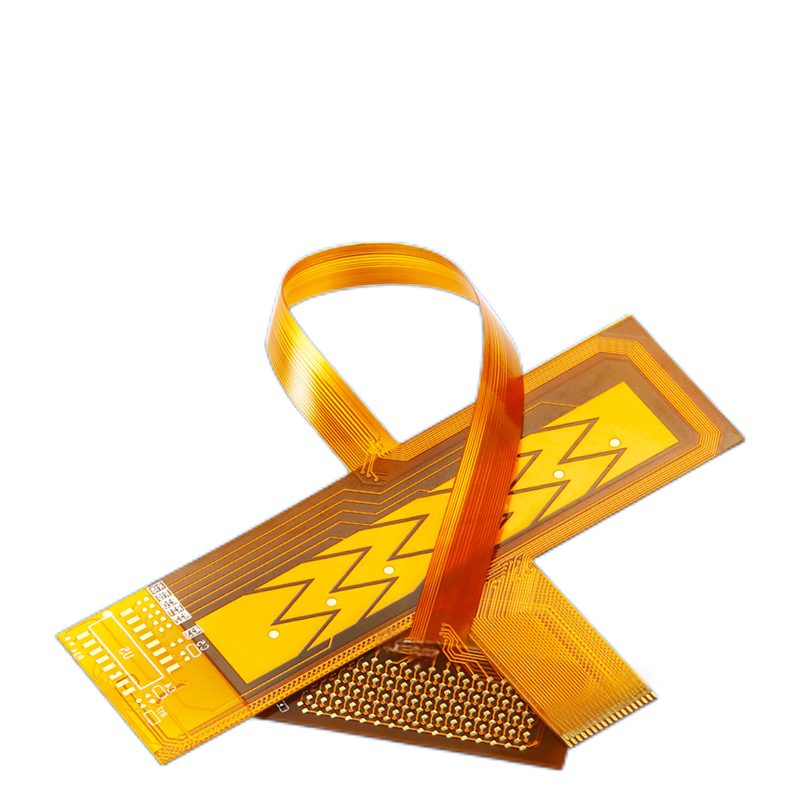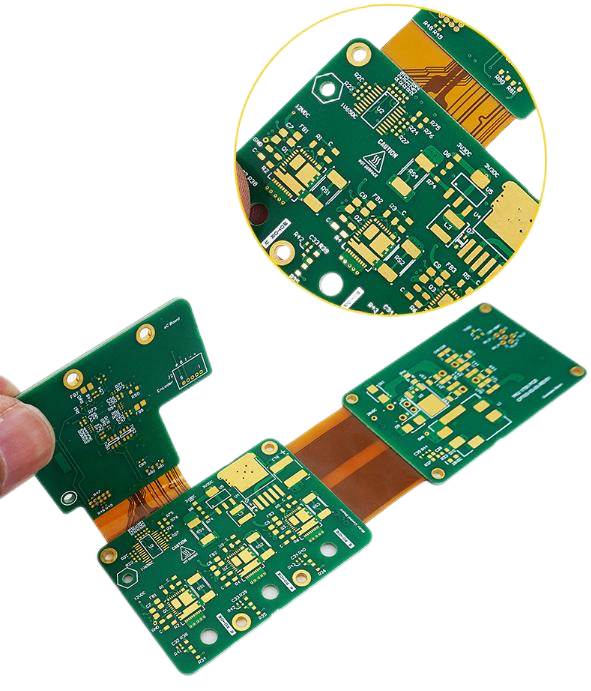Search
Differences between Flexible FPC and Rigid - Flex Printed Board
- Mar 07,2025
-
Share
Shenzhen Huaruixin Electronics Co., Ltd. is a leading manufacturer specializing in the design and production of FPC (Flexible Printed Circuit), PCB (Printed Circuit Board), and Rigid - Flex Printed Board. In the global electronics industry, these terms are widely searched and recognized. Our company is committed to providing high - quality products and professional services in this field. In this blog, we will delve into the differences between flexible FPC and Rigid - Flex Printed Board, sharing in - depth professional insights and key details. We welcome industry peers, old and new friends, to engage in communication and learning.

Flexible FPC and Rigid - Flex Printed Board are two pivotal types of circuit boards, each with distinct characteristics and application scopes. The primary differences between them are elaborated as follows:
1.Structure
Flexible FPC
Flexible FPC, known as a flexible printed circuit, is constructed with a highly pliable structure. It typically consists of one or multiple layers of flexible insulating materials like Polyimide (PI) or Polyester (PET). These materials endow the FPC with remarkable flexibility, allowing it to be bent, twisted, and folded without compromising its electrical performance. This property makes it an ideal choice for applications demanding high - degree flexibility, such as in Wearable Electronics, where it is commonly used to connect various components in a compact and flexible manner. The conductive layer in FPC is usually made of Copper Foil, which is bonded to the insulating layer through a specialized lamination process.
Rigid - Flex Printed Board
A Rigid - Flex Printed Board combines the features of rigid and flexible circuit boards. It comprises both rigid sections, often fabricated using materials like FR - 4 for enhanced mechanical strength and stability, and flexible sections similar to those in FPC. The rigid parts serve as a robust foundation for component mounting, while the flexible parts enable connections and layout in complex spatial arrangements. In the realm of Notebook Computers, for instance, Rigid - Flex Printed Boards are used to connect the motherboard and the display, leveraging the stability of the rigid part and the flexibility of the flexible part to meet the device's mechanical and electrical requirements.
2.Materials
Flexible FPC
The base material of Flexible FPC, namely Flexible Copper Clad Laminate (FCCL), is commonly Polyimide (PI) or Polyester (PET). PI offers excellent heat resistance, chemical resistance, and electrical insulation properties, making it suitable for high - temperature and high - reliability applications. On the other hand, PET is a more cost - effective option with good flexibility and mechanical properties, which is often used in consumer electronics. The Copper Foil used in the conductive layer is carefully selected and processed to ensure optimal electrical conductivity and adhesion to the insulating layer.
Rigid - Flex Printed Board
For the rigid part of the Rigid - Flex Printed Board, materials like FR - 4 are prevalently used due to their high mechanical strength and good electrical performance. The flexible part, as in FPC, utilizes materials such as PI or PET. The integration of these different materials demands a precise manufacturing process to guarantee the board's reliability and performance. Special attention must be paid to the compatibility of materials and the quality of the bonding interface between the rigid and flexible parts.
3.Manufacturing Process
Flexible FPC
The manufacturing process of Flexible FPC involves a series of intricate steps, including Film Pasting, Photoetching, Electroplating, and Lamination. Given its flexible nature, strict control of tension and alignment is crucial during manufacturing to prevent circuit deformation and misalignment. In the Photoetching process, for example, environmental factors such as temperature and humidity can affect the flexible substrate, leading to dimensional changes. Therefore, a controlled environment with precise temperature and humidity regulation is essential. Surface Mount Technology (SMT) is also commonly employed in FPC manufacturing to mount components accurately on the flexible circuit.

Rigid - Flex Printed Board
The manufacturing of Rigid - Flex Printed Board is a more complex process. It requires separate processing of the rigid and flexible parts initially, followed by their integration through processes such as Bonding and Drilling. The key lies in ensuring the integrity of the connection between the rigid and flexible parts to avoid issues like Delamination and poor electrical conductivity. During the Bonding process, the selection of appropriate adhesives and precise control of bonding temperature and pressure are vital to guarantee the reliability of the connection. Advanced manufacturing techniques, such as High - Density Interconnect (HDI) technology, may also be applied in Rigid - Flex Printed Board production to achieve higher circuit density and better performance.
4.Applications
Flexible FPC
Flexible FPC finds extensive applications in Portable Electronic Devices, Medical Devices, and Automotive Electronics. In Mobile Phones and Tablets, FPCs are frequently used to connect the display to the main board and various internal components, taking advantage of their compact size and high flexibility. In Medical Devices, FPCs can be used in flexible sensors and minimally invasive instruments due to their biocompatibility and flexibility. For example, in a wearable health monitor, FPCs are used to connect sensors to the main processing unit, providing a comfortable and unobtrusive user experience.
Rigid - Flex Printed Board
Rigid - Flex Printed Board is mainly applied in high - end electronic products and complex electronic systems that require both high mechanical strength and certain flexibility, such as in Aerospace Equipment, Military Electronics, and High - End Communication Equipment. In Aerospace applications, Rigid - Flex Printed Boards must withstand the harsh environment of space, including extreme temperatures, radiation, and vibration. Their ability to combine rigidity and flexibility makes them suitable for complex circuit layout and connection in these demanding applications.

In summary, when making a choice between Flexible FPC and Rigid - Flex Printed Board, a comprehensive consideration of factors such as specific application scenarios, performance requirements, and cost is necessary. Shenzhen Huaruixin Electronics Co., Ltd. has amassed rich experience in the production of both FPC and Rigid - Flex Printed Board. We adhere to strict quality control and employ advanced manufacturing processes to deliver top - notch products. If you have any inquiries or need further information, please do not hesitate to contact us. Let's collaborate and learn together in the dynamic field of circuit boards.

Let’s talk! We’ll provide the perfect solution for you!
-
 Huaruixin Electronics mainly produces printed circuit boards as the core business, to provide customers with one-stop solutions for FPC/PCB production, components sourcing and Assembly.
Huaruixin Electronics mainly produces printed circuit boards as the core business, to provide customers with one-stop solutions for FPC/PCB production, components sourcing and Assembly. - WHAT WE DO — PCB Design Solutions — Flex PCB Production — Components Sourcing — FPC&PCB Assembly
- PRODUCTS — Single Sided Flexible Circuits — Double Sided Flexible Circuits — Multilayer Flexible Cirucits — Rigid-Flex Circuits — FPC Assembly — PCB Assembly
- CAPABILITY — FPC Capability — Rigid-Flex Capability — PCB Capability — Assembly Capability
- Copyright © 2024 Shenzhen Huaruixin Electronics Co., Ltd. All Rights Reserved.
- Design By BONTOP


